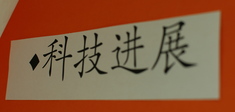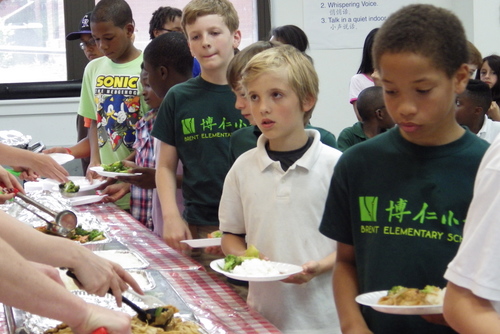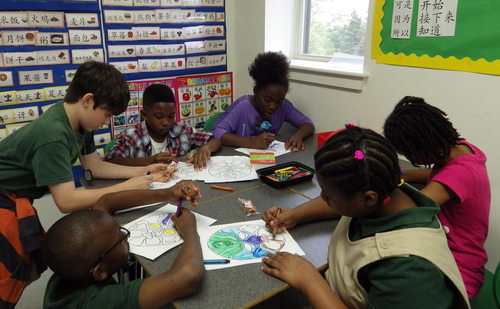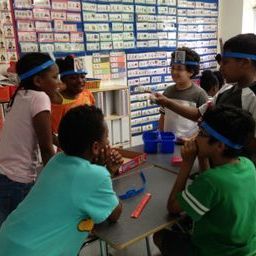DCPS and charters team up to improve Chinese instruction

Photo by the author.
With help from DC’s Office of the State Superintendent of Education, students from 3 DCPS elementary schools are brushing up on their Chinese with help from students at Washington Yu Ying Public Charter School in Ward 5.
OSSE awarded the 5-year-old school a $200,000 dissemination grant to share “best practices” in teaching Chinese. At Yu Ying, which my son attends, teachers with native-level proficiency alternate between lessons in English and Chinese. Students from Brent, Thomson, and Eaton elementary schools, which have their own Chinese programs, recently visited Yu Ying to practice the language and learn about Chinese culture.
Studies show that speaking foreign languages is associated with increased intellectual growth, better listening skills, and enhanced mental development. DCPS Chancellor Kaya Henderson has publicly stated that all DCPS elementary schools will have foreign language instruction, though it’s unclear when.
Last week, Yu Ying’s 4th and 5th grade classes hosted Brent students for a Chinese lunch of chicken, tofu, vegetables, rice, and noodles donated by Tsim Yung, a local restaurant. Most students went back for seconds.
The Brent students came prepared to practice their conversational skills with the Yu Ying students. For example, students discussed which types of food they liked and what they like to do. After lunch, the students retreated to classrooms to color Beijing Opera masks and play Chinese checkers. All of this happened while students spoke Chinese.
Most of the Chinese teachers in DCPS are grew up and learned to teach in China. Education in China and education in the United States are similar in some respects, but are very different in others. Students in China are very different from American students and require different strategies to stay engaged, according to Pearl You, Chinese program coordinator at Yu Ying.
For example, students in China generally respond to a more direct approach from teachers in the classroom, while students here generally require a more nuanced approach that involves more steps and follow up to ensure compliance.
Back at Brent, staff from Yu Ying observed the teachers in their classrooms and then met to discuss suggestions. Students at all three schools receive 45 minutes of Chinese instruction per week, and Yu Ying gave each school a sub-grant to supplement their own resources.
Teachers were especially interested in learning more effective ways to teach American students. Yu Ying staff discussed some new behavioral techniques and more effective ways to use visual aids, such as the “word wall,” which helps students with vocabulary. Teachers also learned how Yu Ying uses Chinese resources, such as leveled readers and flash cards, to reinforce learning, along with better ways to teach pronunciation.
The biggest challenge, however, is not only connecting with the students but also making Chinese language instruction relevant to their families. Yu Ying staff helped the teachers from DCPS understand how to better engage with American students and effectively communicate with their families.
Through this grant, Yu Ying staff has helped improve the Chinese language instruction for over 1100 DCPS students between the three schools. In an increasingly global world, knowing a second language will help these students stand out.



